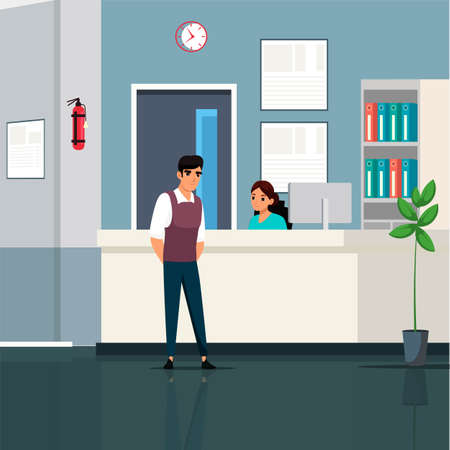Understanding When Your Child is Ready
As a dad, I know how eager kids can be to leave their booster seat behind and “be like the big kids” in the car. But making this move too soon can put your child at risk. So, how do you know if your kiddo is really ready for a regular seatbelt? According to American safety guidelines, the right time depends on a few key factors: age, height, and weight. Generally, most children aren’t ready until they’re at least 8 years old, but age alone isn’t enough. Your child should be at least 4 feet 9 inches tall (that’s about 57 inches) and weigh between 80 to 100 pounds before considering ditching the booster. These guidelines help ensure that the seatbelt fits properly—across the upper thighs and snug across the shoulder and chest, not the stomach or neck. If your child doesn’t meet all these requirements, it’s best to keep using the booster seat a little longer. Remember, it’s not just about following rules—it’s about keeping your family safe on every drive.
Seatbelt Fit Test
Before making the move from a booster seat to just a regular seatbelt, every parent should know about the 5-step seatbelt fit test. This simple check helps you figure out if your child is truly ready to ride safely without a booster. Here’s how you can do it:
The 5-Step Seatbelt Fit Test
| Step | What to Check |
|---|---|
| 1. Back Against Seat | Can your child sit all the way back against the car seat without slouching? |
| 2. Knees Bend Naturally | Do your childs knees bend comfortably at the edge of the seat when sitting back? |
| 3. Lap Belt Position | Does the lap belt rest low across the upper thighs (not the stomach)? |
| 4. Shoulder Belt Position | Does the shoulder belt cross over the middle of your childs shoulder and chest (not on the neck or face)? |
| 5. Staying Put for the Ride | Can your child stay seated like this for the entire trip? |
Why Each Step Matters
If any answer is “no,” it’s not safe to ditch the booster yet. The right fit is crucial—not only for safety, but also for comfort. A poor fit can mean less protection in a crash or encourage your kiddo to wiggle into unsafe positions. That’s why doing this test in every vehicle they’ll ride in is so important; every car’s seat and belt setup is a little different.

3. Choosing the Safest Seating Position
When your child is ready to move from a booster seat to a regular seatbelt, picking the right spot in the car is just as important as using the correct restraint. In American family driving culture, safety experts and pediatricians overwhelmingly recommend that all children under 13 ride in the back seat. This isn’t just tradition—it’s about reducing risk from front-seat airbags and minimizing injury in case of a crash. The safest place for your kid is typically the middle of the back seat, since it’s furthest from any point of impact. However, if you have multiple kids or car seats, use your best judgment to ensure everyone is properly buckled up and secure. Remember, front passenger airbags are designed for adults and can be dangerous—even deadly—for smaller children. Even if your child fits well in a seatbelt, keep them in the back until their teenage years for maximum safety. If you drive an SUV or a truck with different seating configurations, double-check your vehicle manual for recommendations on safe seating positions and airbag deactivation options when needed.
4. Proper Way to Buckle Up
Once your child is ready to move out of the booster seat, buckling up correctly is absolutely crucial for their safety. Here’s a step-by-step guide for making sure your child is secured properly with the vehicle’s seatbelt:
Step-by-Step Guide to Buckling Up
- Have Your Child Sit All the Way Back: Make sure your child sits upright with their back flat against the vehicle seat and knees naturally bending at the edge.
- Position the Lap Belt: The lap belt should lie snugly across your child’s upper thighs, not the stomach. This helps distribute force safely in case of an accident.
- Adjust the Shoulder Belt: The shoulder belt should cross the middle of your child’s chest and rest on their shoulder—not touching their neck or face, and never under their arm or behind their back.
- Tighten and Check: Pull the belt tight enough so it lays flat without any twists. Double-check that both parts of the belt are positioned correctly before you start driving.
Quick Seatbelt Fit Checklist
| Check | What to Look For |
|---|---|
| Sitting Position | Back against seat, knees bend at edge |
| Lap Belt Placement | Across upper thighs, not stomach |
| Shoulder Belt Placement | Middle of chest, on shoulder |
| Belt Tightness | No slack or twists in either belt |
Pro Tip for Parents
If your vehicle has adjustable seatbelt anchors, use them to make sure the shoulder belt fits perfectly. Remind your child every ride to sit properly—slouching can cause the seatbelt to shift into unsafe positions.
5. Common Mistakes to Avoid
Transitioning your child from a booster seat to a regular seatbelt is a big step, but it’s easy to make some missteps along the way. Here are some typical errors parents make during this process and tips on how to catch and correct them before you hit the road.
Moving Out of the Booster Seat Too Soon
A lot of parents are eager to let their kids ride like “big kids,” but switching too early can put your child at risk. Remember, your child should meet all height, weight, and age requirements recommended by both your state’s laws and car seat manufacturer guidelines. Double-check these numbers before making the move.
Incorrect Seatbelt Positioning
It’s common for parents to overlook how the seatbelt actually fits once their child is out of the booster. The lap belt should sit low across the upper thighs, not the stomach, and the shoulder belt should cross the middle of the chest and shoulder—not the neck or face. Take a few minutes to do a “seatbelt fit test” every time you buckle up.
Letting Kids Sit in the Front Seat Too Early
Even if your child looks grown up, riding in the front seat isn’t safe until at least age 13 according to most safety experts, including the American Academy of Pediatrics. Airbags can be extremely dangerous for younger children, so keep them in the back until they’re old enough.
Ignoring Your Child’s Comfort and Posture
If your child is slouching or fidgeting with the seatbelt because it feels uncomfortable, that’s a red flag that they might not be ready for just a seatbelt yet. Ask them how it feels and watch their posture—kids who can’t sit comfortably for an entire trip may still need that booster support.
How to Spot and Fix These Mistakes
- Do a regular check-in: Before every trip, make sure your child is buckled correctly and comfortably.
- Stay updated on local laws: State regulations can change, so check them annually or after any big growth spurts.
- Talk with your child: Encourage open communication about comfort and any issues with their seatbelt fit.
Bottom Line
The transition from a booster seat to a regular seatbelt is an important milestone—don’t rush it. Being mindful of these common mistakes will help keep your kid safe and give you peace of mind every time you’re on the road.
6. Talking to Your Child About Car Safety
As parents, one of our most important jobs is teaching our kids how to stay safe—especially in the car. When your child is ready to switch from a booster seat to a regular seatbelt, it’s the perfect time to have an honest conversation about why seatbelts matter and what good car habits look like. Here are some tips on how to make these talks age-appropriate and easy for your child to understand:
Keep It Simple and Relatable
Use words your child knows. For younger kids, you might say, “Seatbelts are like hugs that keep us safe if the car stops suddenly.” For older children, explain that seatbelts protect everyone inside the car during accidents or even quick stops.
Be Honest But Not Scary
You don’t need to frighten your child with worst-case scenarios. Instead, calmly explain that seatbelts help prevent injuries. You can say something like, “Wearing your seatbelt helps make sure you don’t get hurt if something unexpected happens.”
Make Safety a Family Rule
Let your child know that wearing a seatbelt is non-negotiable—just like brushing teeth or looking both ways before crossing the street. Set the example by always buckling up yourself and making sure everyone in the car does the same.
Encourage Questions
Your child might be curious about how seatbelts work or why they’re so important now that they’re out of the booster seat. Welcome their questions and answer them honestly. If you don’t know an answer, look it up together—it’s a great way to reinforce learning.
Practice Good Car Habits Together
Turn buckling up into a routine every time you get in the car. Praise your child when they remember on their own. Talk about other good habits too, like sitting still while the car is moving, keeping toys off the floor so no one trips, and never unbuckling until you’ve parked.
Use Real-Life Examples
If you see someone not wearing their seatbelt (in movies or around town), use it as a gentle teaching moment: “We always wear our seatbelts because we care about staying safe.” Stories and examples help lessons stick without feeling preachy.
By having open conversations and modeling good behavior, you’ll help your child develop lifelong safety habits—and give yourself peace of mind every time you hit the road together.

